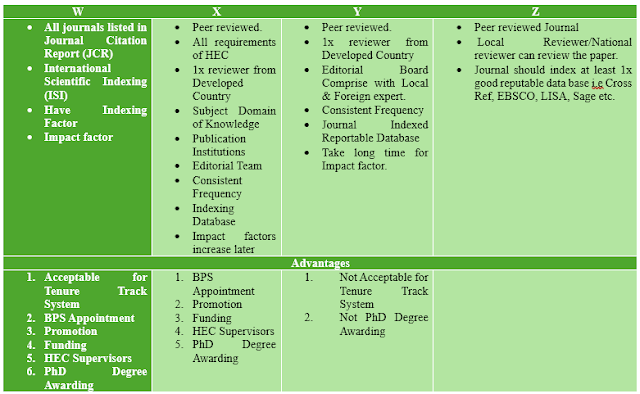What are Journals Categories In Nursing Education
What Is Impact Factors & Article Citations
The impact factor (IF)
or journal impact factor (JIF) of an academic journal is a scient metric
index that reflects the yearly average number of citations that articles
published in the last two years in each journal received. It is frequently used
as a proxy for the relative importance of a journal within its field; journals
with higher impact factors are often deemed to be more important than those
with lower ones.
History of Journals Data Base In Research
The impact factor was devised by Eugene Garfield, the founder of the Institute for Scientific Information (ISI). Impact factors are calculated yearly starting from 1975 for journals listed in the Journal Citation Reports (JCR).
ISI
was acquired by Thomson Scientific & Healthcare in 1992 and became known as
Thomson ISI. In 2018, Thomson ISI was sold to Onex Corporation
and Baring Private Equity Asia. They founded a new corporation, Clarivate,
which is now the publisher of JCR.
The value of impact factor depends on how to define "citations" and "publications"; the latter are often referred to as "citable items". In current practice, both "citations" and "publications" are defined exclusively by ISI as follows. "Publications" are items that are classed as "article", "review" or "proceedings paper" in the Web of Science (WoS) database; other items like editorials, corrections, notes, retractions, and discussions are excluded.
WoS is accessible to all registered users, who can independently
verify the number of citable items for a given journal. In contrast, the number
of citations is extracted not from the WoS database, but from a dedicated JCR database,
which is not accessible to general readers. Hence, the commonly used "JCR
Impact Factor" is a proprietary value, which is defined and calculated by
ISI and cannot be verified by external users.
New journals, which are
indexed from their first published issue, will receive an impact factor after
two years of indexing; in this case, the citations to the year prior to Volume
1, and the number of articles published in the year prior to Volume 1, are
known zero values.
How is Impact Factor Calculated?
The calculation is based
on a two-year period and involves dividing the number of times articles were
cited by the number of articles that are citable.
Calculation of 2010 IF of a Journal
A =
the number of times articles published in 2008 and 2009 were cited by indexed
journals during 2010.
B =
the total number of "citable items" published in 2008 and 2009.
A/B
= 2010 impact factor
What are Scientific
Journals & HEC Journal Categorization? W, X, Y & Z Category.
HEC has developed a
mechanism in which they have categorized all the national and international
journals into 4 categories. The journals are classified into W, X, Y, and Z
category. The following are details of each category.
W Category
Journals listed in
Journal Citation Report (JCR) of ISI having an Impact Factor are categorized
into W category. These are the most valued journals.
X Category
Expert groups certify
that they are top, recognized journals in the subject of archival quality.
Journals not having an Impact Factor but verified by HEC that they meet all HEC
Journal Criteria and have paper reviewed by at least one expert from an
Industrially/Academically advanced country in the respective discipline.
Y Category
Expert groups certify
that they are top, recognized journals in the subject of archival quality.
Journals not having an Impact Factor. They meet all HEC Journal Criteria except
review of each paper by at least one expert from an Industrially/Academically
advanced country in the respective discipline.
Z Category
Expert groups certify
that they are good, recognized journals in the subject of archival quality.
Journals not having an Impact Factor. They meet all HEC Journal Criteria except
Review of each paper by at least one expert from an Industrially/Academically
advanced country in the respective Discipline and not Abstracted/Indexed
internationally by a recognized Agency.
Utilization of Categories
W Category:
Acceptable for Tenure Track System
X Category:
Acceptable for BPS appointments/ promotions, HEC Approved Supervisor and
Publication of research of PhD work until 30th June 2016. The Candidates
enrolled in PhD after January 10, 2010 are required to publish their research
paper in HEC recognized "W or X" category journals for award of PhD
degree.
Y Category:
Acceptable for BPS appointments and Publication of research of PhD work until
June 30th, 2016. The candidates enrolled in PhD before January 11, 2010 can
publish the research paper in HEC Recognized "Y" category journal for
award of PhD degree
The International Social
Science Journals included in Journal Citation Report (JCR) of Institute for
Scientific Information (ISI) would be considered as "W" category
journals. Journals included in ISI Master List would be considered as "X"
category journals. Journals abstracted/ indexed by the agencies mentioned in
the Ulrich Periodical Directory would be considered as "Y" category
journals. The International Science Journals having an impact factor and are
listed in Journal Citation Report (JCR:
Check Impact Factor for 5 years and citation Report.





Give your opinion if have any.